Family : Haemulidae

Text © Giuseppe Mazza

English translation by Mario Beltramini
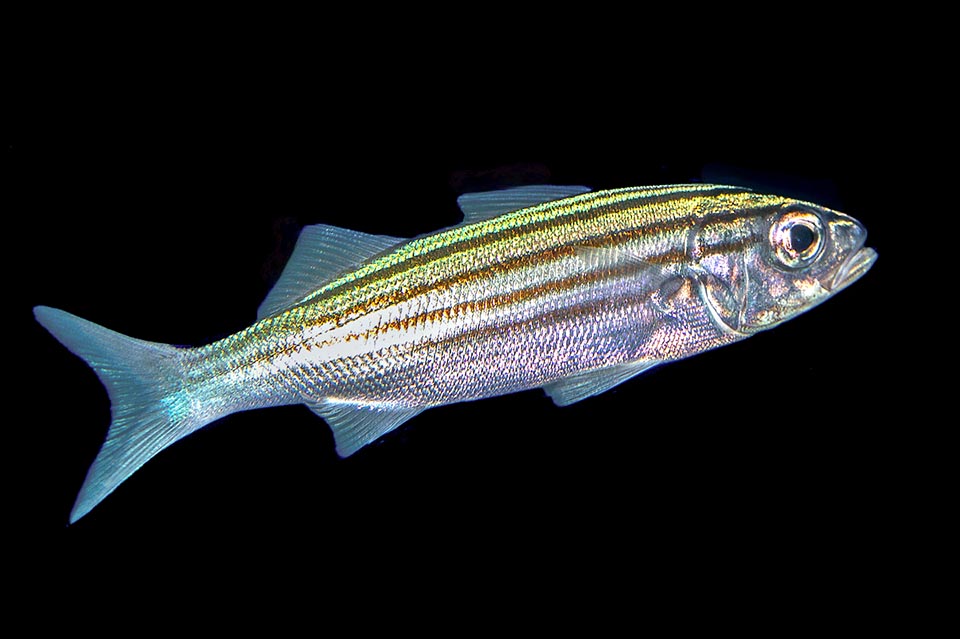
Endemic to Galapagos, Brachygenys jessiae is a small Haemulidae characterized by a silvery livery and about 7 black longitudinal stripes on both sides © Allison & Carlos Estape
Endemic to Galápagos Islands, where in English is called Black-striped salema, thats is Black-striped Salpa due to a certain resemblance with the Sarpa salpa, known Sparidae of Mediterranean, present also along the eastern Atlantic coast and then in the Indian Ocean up to Madagascar, Brachygenys jessiae (Jordan and Bollman, 1890) actually belongs to the family Haemulidae, that is, it is a grunt fish, like the analogous and more diffused Smallmouth grunt (Brachygenys chrysargyreum).
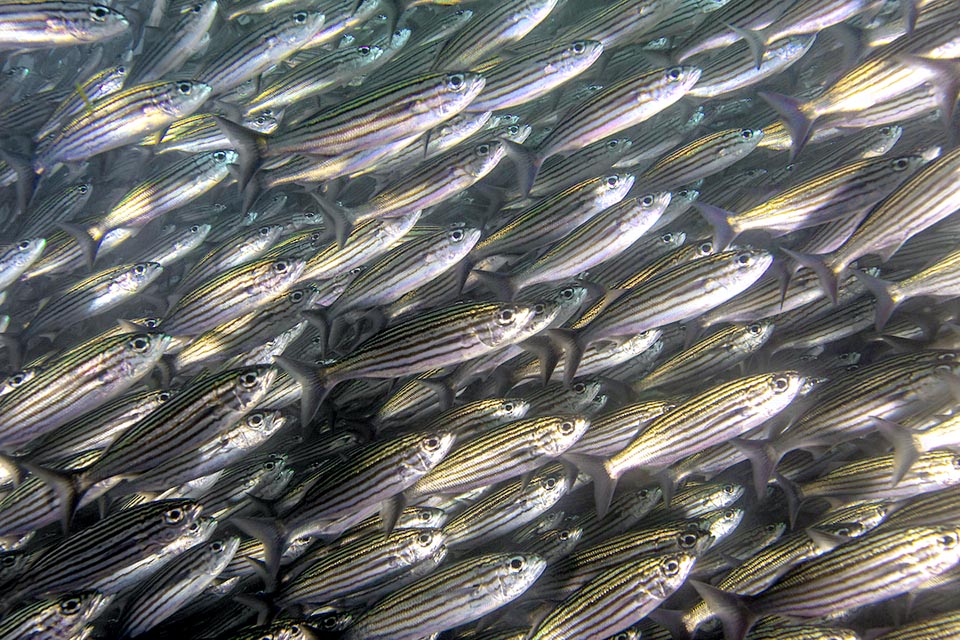
It’s a species with a range of only 500-2.000 square km that already appears as “Vulnerable” in the IUCN Red List of the endangered species © Allison & Carlos Estape
The name of the genus Brachygenys comes from the Greek “βραχυζ” (Brachy), short and “ϒενυζ” (genys), chin, with reference to iits small mouth whilst the specific term jessiae, of Jessica in Latin, is a tribute to Jessie Knight Jordan, second wife of David Starr Jordan, co-author of the description.
Zoogeography
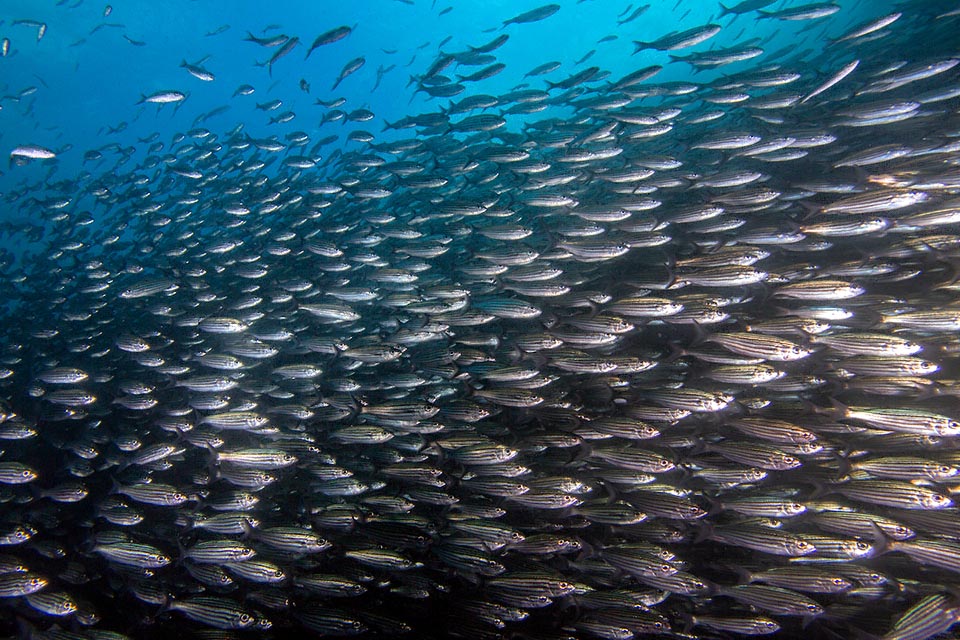
In fact, it feeds only in zooplankton subject to frequent die-offs due to the overheating of the surface waters © Allison & Carlos Estape
Brachygenys jessiae is mainly present in the central and western part of the archipelago.
Recent estimations talk of about 500 square kilometres, but is certainly less than 2.000 square km.
Ecology-Habitat
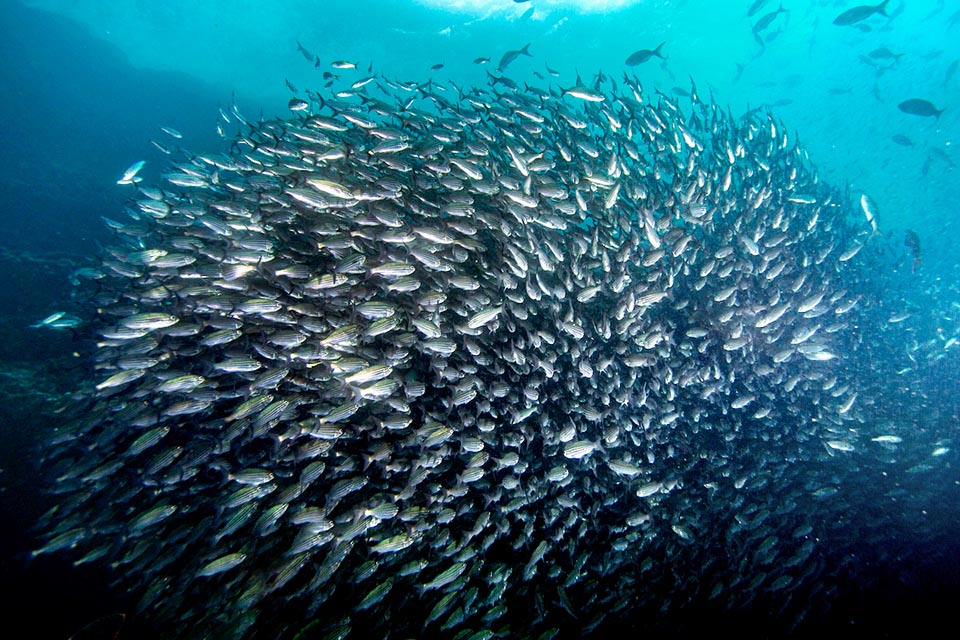
It forms huge compact schools resting motionless during the day to escape predators’ gaze © Allison & Carlos Estape
Brachygenys jessiae usually forms, during daylight hours, thick schools of fishes along the steep rocks that border the coral formations.
Then it goes hunting for zooplankton in surface waters between 3-11 m of depth, even if, exceptionally, it can go down up to about 18-20.
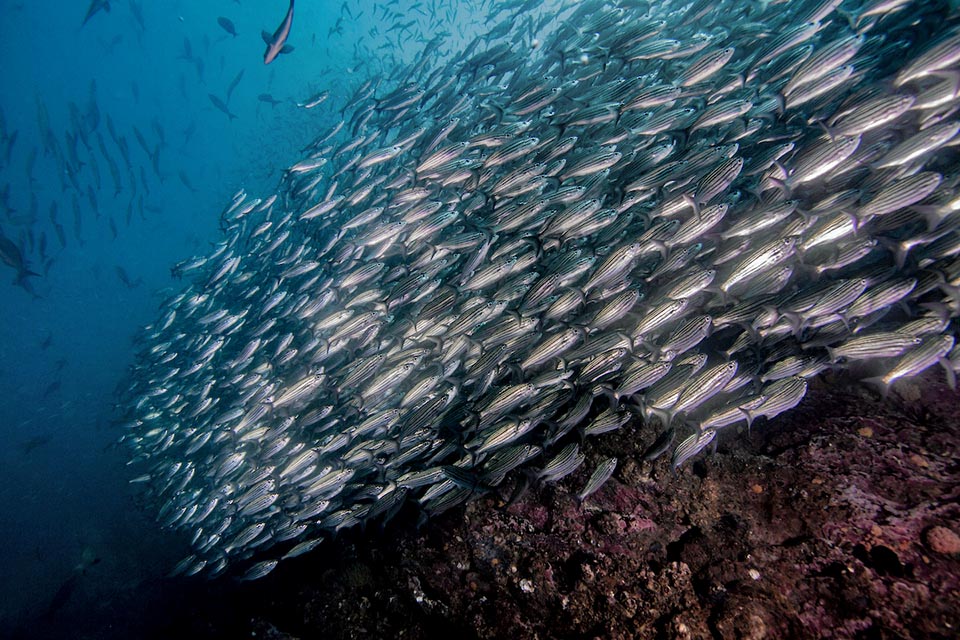
Here they have visually integrated into a large rock, as do other grunt fishes like Brachygenys chrysargyreum or Haemulon flavolineatum © Allison & Carlos Estape
This form of feeding is its weak side, because even if it is a relatively prolific species with immense schools, it is subject to periodic mass die-offs when the food is lacking due to the sudden and intense heating of the surface waters.
A phenomenon called ENSO (El Niño-Southern Oscillation), that occurred averagely every 3 to 7 years, between December and January, but that is unfortunately intensifying due to the climate changes.
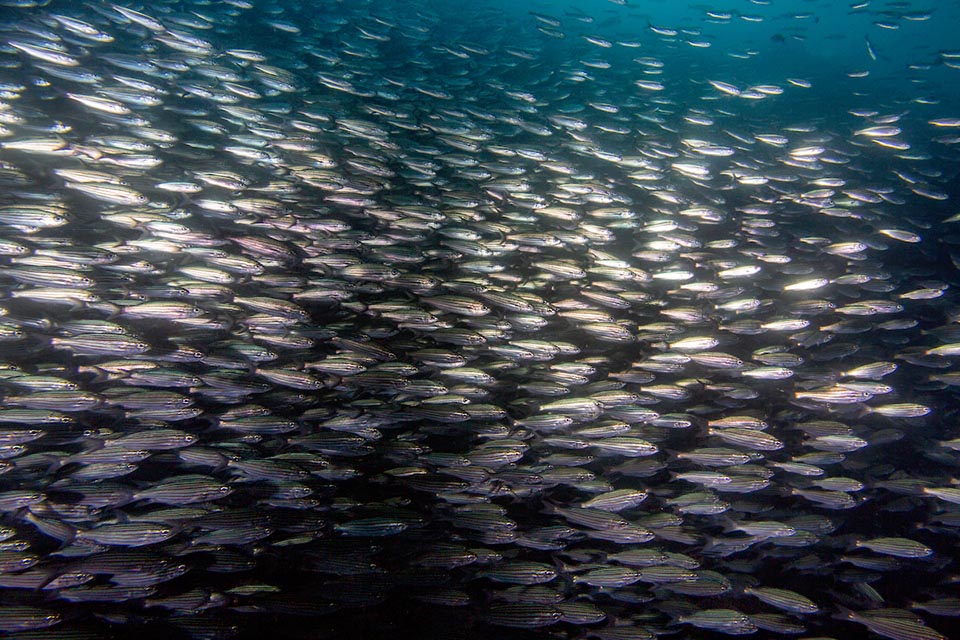
Then they leave again looking for zooplankton usually swimming at 3-11 m of depth, the zone unluckily interested by the periodic overheating linked to ENSO © Allison & Carlos Estape
Moreover it is a species fished for local consumption and as bait for tuna fishing.
Morphophysiology
Brachygenys jessiae may reach the length of 30 cm. The body, compressed and elongated, has a conical head, as well as flat, with a big eye. The mouth, oblique, is short, with the lower jaw slightly protruding.
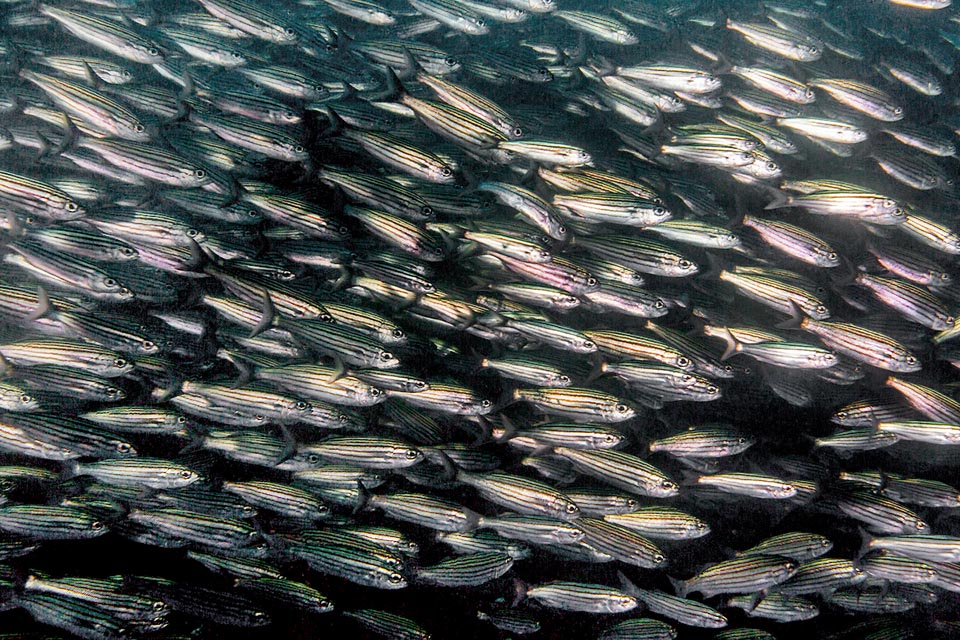
This occurred every 3-7 years, between December and January, but nowadays is much more frequent due to the climate changes © Allison & Carlos Estape
There are two dorsal fins. The first has 10 spiny rays, and the second 1 spiny ray and 13-14 unarmed, whilst the anal counts 3 small spines and 10-1 soft rays. The pectoral ones are unarmed and the caudal is forked.
The livery, silvery, has about 7 longitudinal black stripes per side.
Ethology-Reproductive Biology
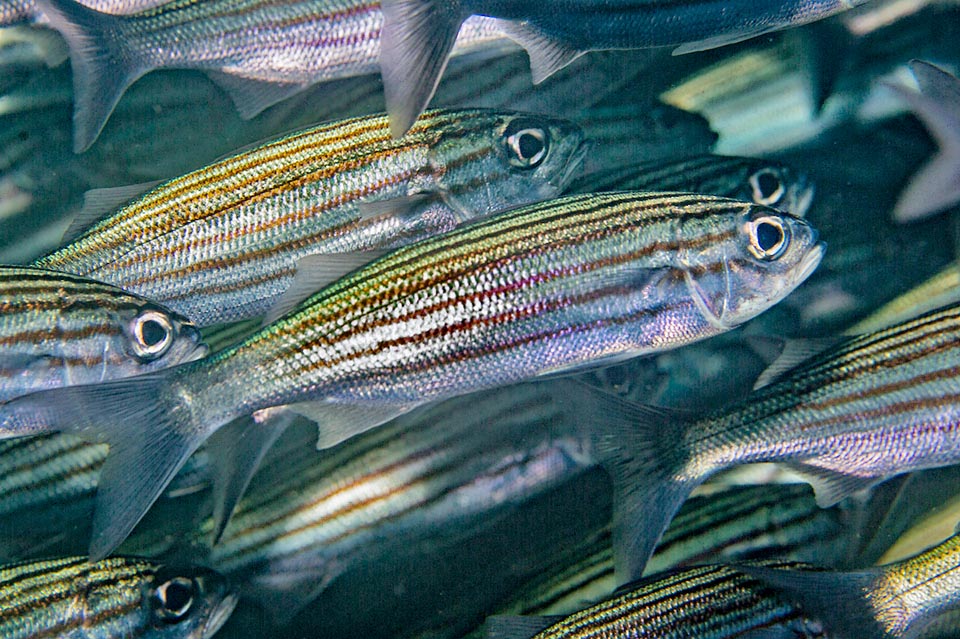
Reproduction doesn’t occur as one might think in group, and the couples entrust the fecundated eggs to the currents © Allison & Carlos Estape
In the reproductive gatherings the fecundation does not happen as one might think in a group, but in separate couples with eggs entrusted to the currents.
The resilience is mediocre with a minimum time for doubling the populations of 1,4-4,4 years. The fishing vulnerability, low, marks only 20 on a scale of 100.
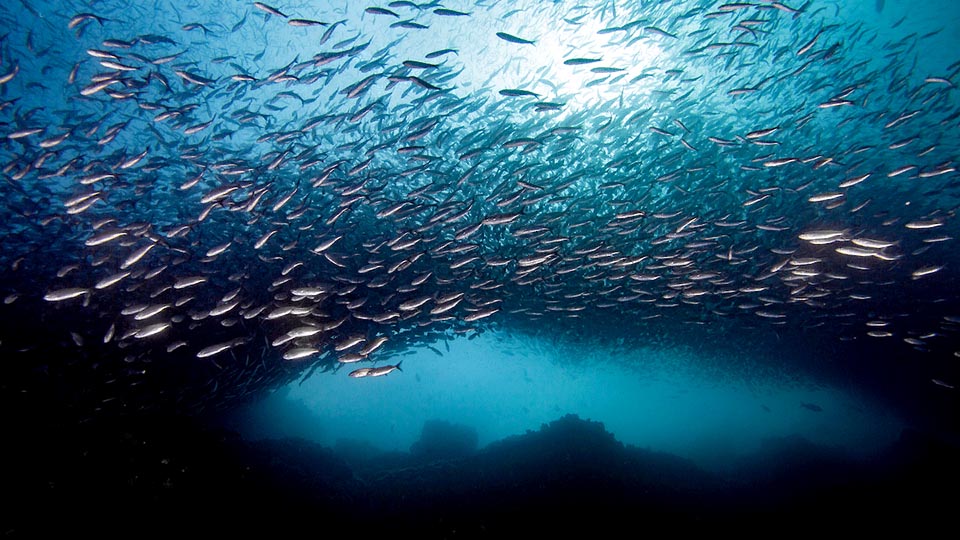
Resilience is mediocre and the fishing vulnerability is low. The only risk looming over the species is the increasing frequency and intensity of the sea overheating © Allison & Carlos Estape
The Achilles heels remains then the sudden die-off of zooplankton due to ENSO and for this reason, besides the modest range, the biologists of the IUCN Red List of the endangered species have placed in 2022
Brachygenys jessiae in the category “(VU) Vulnerable”.
Synonyms
Xenocys jessiae Jordan & Bollman. 1890.
→ For general information about FISH please click here.
→ For general information about BONY FISH please click here
→ For general information about CARTILAGINOUS FISH please click here.
→ To appreciate the BIODIVERSITY of BONY FISH please click here.
→ To appreciate the BIODIVERSITY of CARTILAGINOUS FISH please click here.
